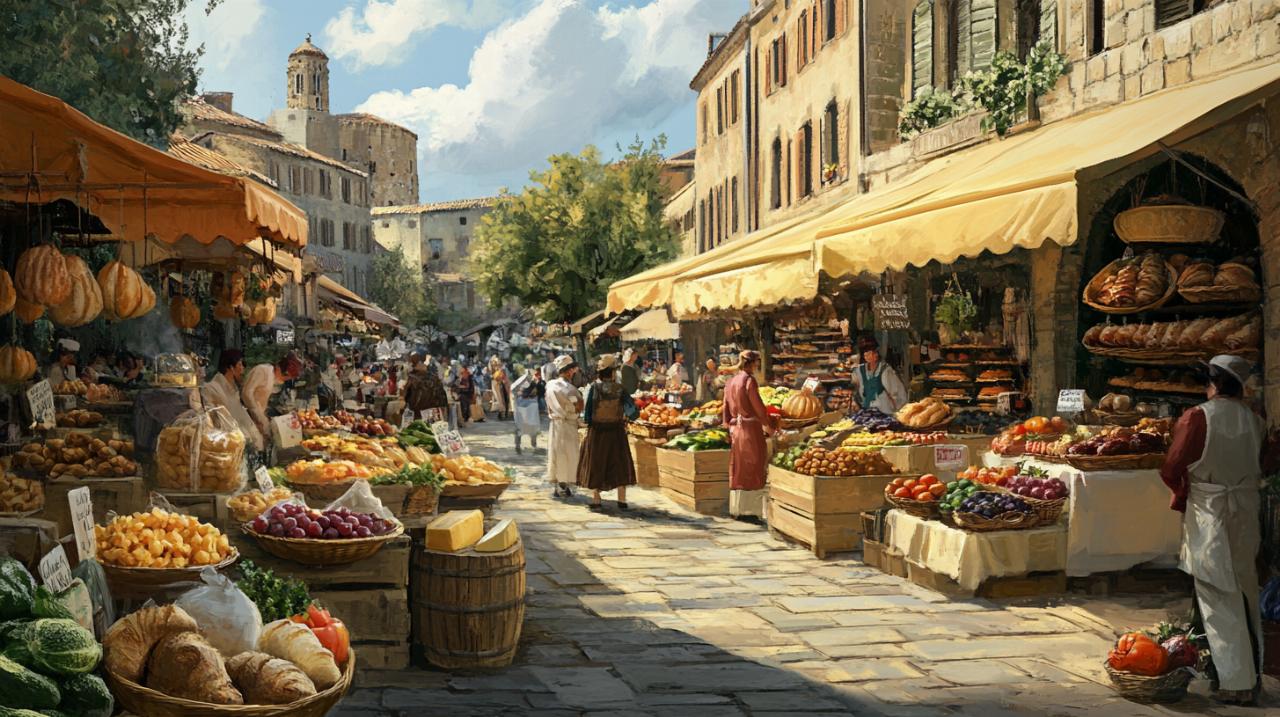Wandering through the winding streets of Europe, one quickly discovers that the heart of any community often lies within its bustling markets and the traditions woven through everyday life. These gathering places offer far more than just opportunities to purchase goods; they provide genuine glimpses into the soul of a nation, where local customs, time-honoured craftsmanship, and the rhythm of daily existence converge in vibrant harmony.
The living tapestry of european craftsmanship
Across the continent, the deep connection between artisan markets and cultural heritage reveals itself in countless forms. From the ancient stone buildings of Lisbon's Alfama to the elegant baroque facades of Prague's Mala Strana, European craftsmanship remains alive in both the structures that house these markets and the goods displayed within them. Skilled artisans continue to employ techniques refined over centuries, creating objects that speak to a particular place and its people. Walking through Florence's Mercato di Sant'Ambrogio, one encounters vendors whose families have sold Tuscan specialities for generations, their knowledge of regional produce passed down through countless harvests. These markets serve as living museums where the past informs the present, and where the act of buying a simple loaf of bread becomes an exchange steeped in tradition.
Traditional techniques passed through generations
The methods employed by European craftspeople reflect a dedication to quality that transcends mere commercial transaction. In Vienna's Naschmarkt, one finds vendors offering not only local Austrian delicacies but also international foods prepared with meticulous care, their stalls transformed into miniature theatres of culinary art. The Saturday vintage section of this market showcases furniture and objects crafted using techniques that modern mass production has all but forgotten. Similarly, London's Portobello Road Market draws collectors and enthusiasts seeking antiques that bear the marks of their makers, each piece a testament to the skills of long-departed artisans. In Barcelona, La Boqueria presents an array of Spanish foods where the preparation of seafood follows rituals established by fishing communities centuries ago. These traditional methods are not preserved as museum curiosities but remain integral to daily commerce, demonstrating that heritage and modernity need not exist in opposition.
Regional specialities that define continental identity
Every corner of Europe boasts its own distinctive offerings, shaped by geography, climate, and history. San Sebastián's pintxos culture represents more than mere snacks; it embodies the Basque approach to conviviality and gastronomy. Bologna's dedication to fresh pasta and its celebrated ragù reveals the Italian reverence for ingredients and technique, whilst Lyon's cheeses and charcuterie speak to French traditions of careful aging and flavour development. In Croatia's Slavonia region, the production of kulen sausage follows recipes refined over generations, the spicing and curing process reflecting local tastes and agricultural practices. These regional specialities serve as edible expressions of identity, connecting contemporary diners to the farmers, herders, and cooks who shaped their development. Markets throughout Europe celebrate these local products, offering visitors the chance to taste the essence of a place and understand its character through flavour and texture.
Where heritage meets the modern market square

Today's European markets occupy a fascinating space where ancient traditions encounter contemporary life. In cities such as Edinburgh, where the Old Town's Royal Mile hosts festivals like the Edinburgh Festival Fringe, cultural expression spills from galleries and concert halls into open-air markets and street performances. The Jewish Quarter of Budapest demonstrates this blend particularly well, with its ruin bars and street art coexisting alongside the historic Dohany Street Synagogue, creating an environment where past and present engage in constant dialogue. Berlin's Kreuzberg district similarly combines independent boutiques, contemporary galleries, and the East Side Gallery's preserved sections of the Berlin Wall, offering visitors a multifaceted experience of culture and commerce. These districts prove that heritage need not remain static but can evolve whilst retaining its essential character.
Navigating the Finest Artisan Markets Across the Continent
For those seeking authentic encounters with European culture, certain markets stand out as essential destinations. Paris offers the Marché Bastille, where the aroma of fresh baguettes mingles with the pungent richness of regional cheeses, whilst the city's flea markets in areas near Marseille present treasures ranging from antique furniture to vintage jewellery. Spain hosts medieval fairs such as the Bodas de Isabel de Segura in Teruel during February, and Hondarribia in Gipuzkoa revives medieval traditions each June, transforming town squares into living history exhibitions. Ireland and Scotland's craft fairs showcase Celtic-inspired items accompanied by traditional music, connecting visitors to the artistic heritage of the British Isles. Vienna's MuseumsQuartier blends historical and modern architecture, housing institutions like the Leopold Museum and MUMOK, whilst nearby markets offer seasonal foods and handmade crafts. Lisbon's Alfama neighbourhood, the city's oldest quarter, resonates with Fado music and hosts markets where vendors sell everything from fresh fish to hand-painted tiles. Barcelona's El Raval combines the contemporary art of MACBA with the sensory abundance of the Boqueria Market, creating a district where artistic expression and daily sustenance intertwine.
The cultural significance behind each handcrafted treasure
Every object found in these markets carries meaning beyond its practical function. Handmade crafts reflect not merely individual skill but collective memory, each piece embodying techniques developed in response to local materials and needs. When one purchases a hand-woven textile from a Scottish fair or a piece of pottery from a Provençal market, the transaction extends beyond commerce to become a form of cultural preservation. Traditional festivals such as Spain's La Tomatina and Scotland's Beltane Fire Festival demonstrate how communities use celebration to maintain connections to their past, whilst Austria's Krampusnacht, Italy's Carnival of Venice, and Greece's Easter traditions reveal the diverse ways Europeans mark the passage of seasons and honour ancient beliefs. These festivals often feature markets selling items specific to the celebration, linking commerce to ritual and reinforcing the bonds between material culture and spiritual life. In April, cities like Zaragoza and Seville host outdoor concerts featuring jazz and rock performances in historical settings, whilst Madrid and Barcelona's theatres stage productions exploring Spanish history and culture. Guided tours through these cities reveal hidden stories embedded in architecture and urban planning, helping visitors understand how past events shaped present realities. Museums throughout Europe mount temporary exhibitions of traditional crafts, allowing contemporary audiences to appreciate the artistry of their ancestors. Even the parks and gardens that host cultural events become part of this living heritage, as their landscaping often follows principles established centuries ago. International festivals frequently include workshops where participants can learn traditional techniques, ensuring that knowledge passes to new generations and that craft skills remain vibrant rather than becoming mere historical footnotes. The preservation of artisan markets and cultural heritage ultimately serves not as an exercise in nostalgia but as a vital means of maintaining continuity, providing communities with a sense of identity and offering visitors meaningful connections to places they might otherwise experience only superficially. By engaging with these markets, speaking with vendors, sampling local specialities, and observing traditional practices, travellers participate in cultural exchange that enriches both visitor and host, sustaining the diverse tapestry of European life for future generations to explore and cherish.



